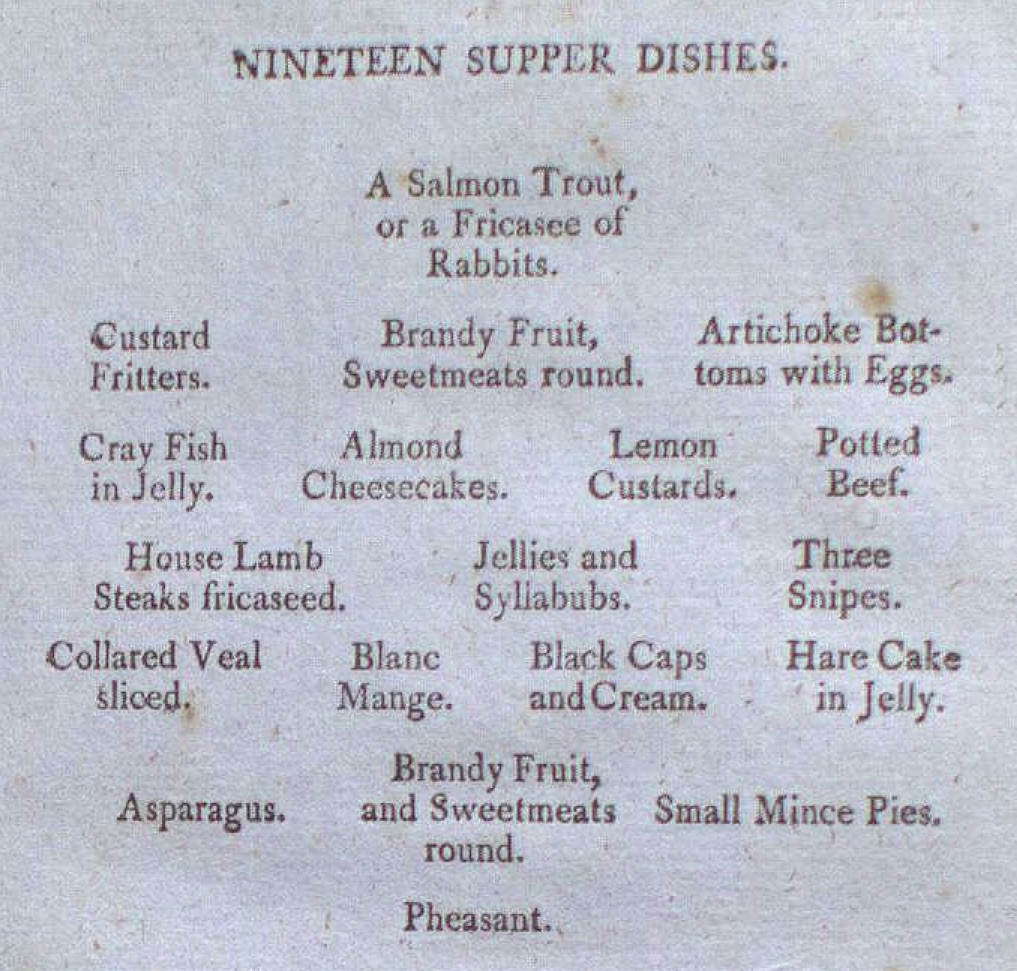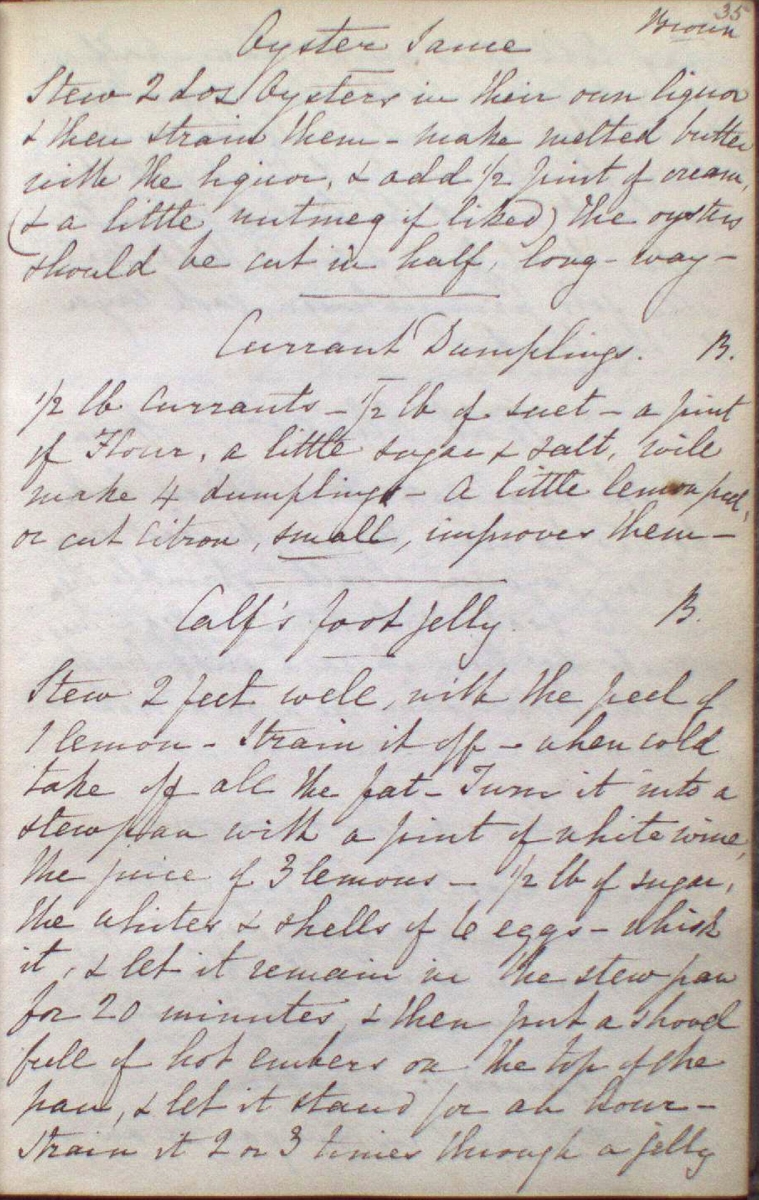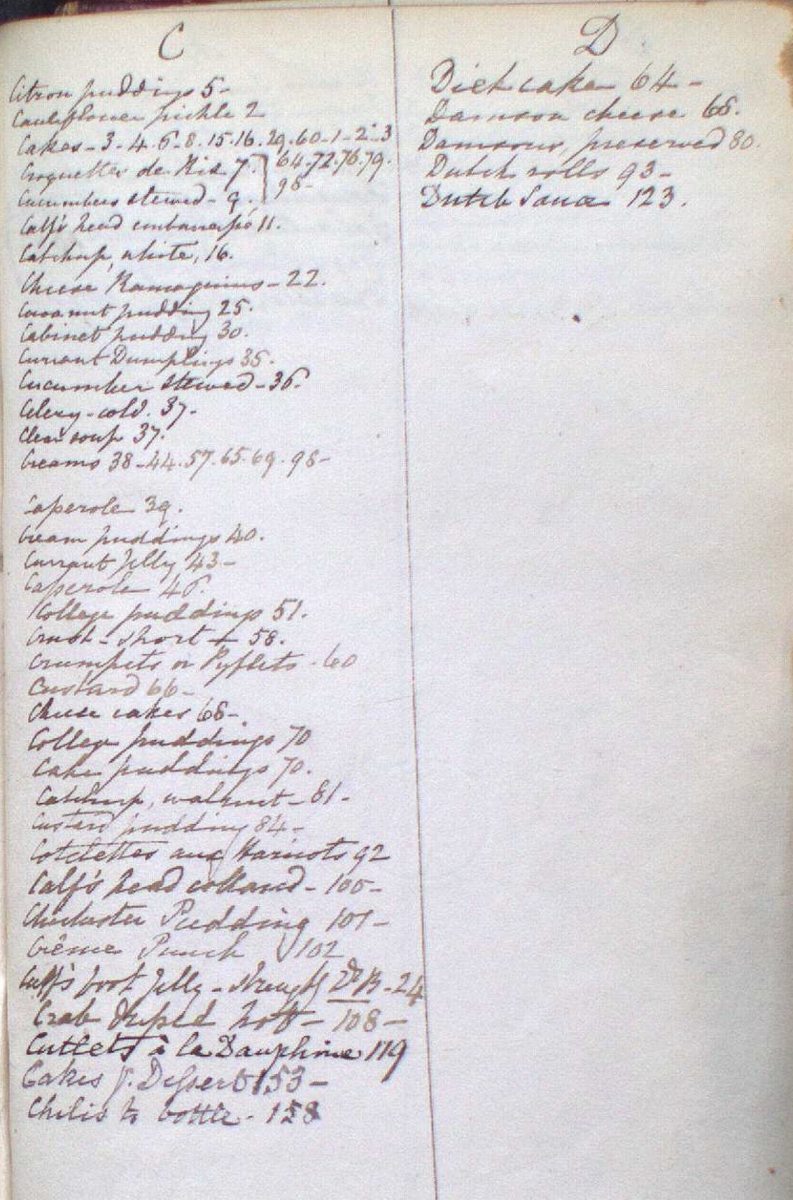Cooking up History: Historical Recipe Books
Published
Categories
Blog Post
The cookbooks of the past provide information about diet and habits, as well as telling us which foods were expensive treats, and which were commonly available. Many of the foods that appear regularly through the centuries are not often eaten today, like pickled eel, fried lamprey, and cow-heel soup. Others are familiar, such as macaroni soup or an 1877 recipe for ‘Indian dal’.

The instructions in these books would be surprising and puzzling to many modern readers. The ingredients are not listed at the beginning, and the methods of preparation are brief. The writers of these cookbooks assumed a good deal of knowledge on the part of the reader, and they do not explain their processes step-by-step. Many of the instructions include steps that the modern cook would not expect, particularly in the preparation of meat dishes. A common dish, ‘Stewed Calf’s Head’ found in cookbooks from the 14th through 19th century, includes the instruction to ‘take out the brains, bone it, remove the tongue and the eyes’. Today meats are frequently cleaned and prepared for cooking by the butcher - then, the cook would have been expected to do some or all of this job.
Cooksbooks tell us what people ate, but they also tell us how people ate. Honours of the Table gives instructions and diagrams on the correct method to carve everything from a hare to cow's tongue, as well as advice on how to behave at the table. The Lady's Assistant provides dinner menus that list from four to nineteen dishes for a meal. In 1903, Marion Harland proposed meals constucted around colours such as 'a pink dinner (for Friday)' with pink soup, pink fish, pink salad and a pink cake.



Cookbooks from the 17th century and earlier tend to be directed toward professional chefs, and to record recipes for festive or royal occasions. The church calendar dictated many seasonal changes in diet which are reflected in recipes for ‘fisshe-days’, ‘flesshe-days’, ‘ember-days’ and ‘lenton-days’. For a royal celebration, the 14th-century manuscript Arundel 344 includes a recipe for roasted peacock, a bird only the king and court were permitted to eat.


By the 18th and 19th centuries cookbooks were addressed to home cooks rather than chefs, and included recipes for ordinary daily food as well as foods for celebration. The anonymous 'Lady' who wrote the New System of Domestic Cookery in 1809 included a preface to her book in which she make explicit her desire to address the needs of families, lamenting that she 'rarely meets with butter properly melted, good toast and water or well-made coffee' With an eye to economy, she avoids luxuries she views as excessive such as 'essence of ham'.
The idea of good household management is particularly important in 19th and early 20th century cookbooks. Aspirational families wanted to present respectable and comfortable households to friends and acquaintances. In addition to recipes, many of the books include advice on instructing servants, recipes for cleaners, and tips on economising. The ability to run a household efficently was considered a necessary skill for young ladies, without which all other accomplishments were diminished. The Home Cook Book says 'no matter how talented a woman may be, or how useful in the church or society, if she is an indifferent housekeeper is it fatal to her influence, a foil to her brilliancy and a blemish in her garments'.

You may have a collection of your own recipes, or recipes inherited from a grandparent. Many women in the 19th century kept recipe books, and these were passed on to female relatives who would themselves add to the collection. The notebooks were heavily used, and it is rare for such utilitarian objects to survive. This book was complied by a Mrs. Austen, who bequethed it to her niece on her death in 1888. The recipes are densly written, and carefully indexed at the back.


Groups also complled recipe books. The 'Ladies of Toronto and Chief Cities and Towns in Canada' compiled The Home Cook Book. The title page proclaims it as 'Tried! Tested! Proven!' and in 1877 it was published in an astonishing seventieth edition - truely tried and tested! The book includes popular recipes for items like muffins, waffles, and 'splendid ginger beer', as well as recipes that reflect Canadian produce and places such as Pumpkin Pie, Squash Pie, Corn cakes, and 'Port Hope Biscuits'. There is even a 'Toronto Pie' submitted by one Mrs. D. With some imagination and ingenuity, you could try the recipe yourself, and let us know in the comments how it turns out!




